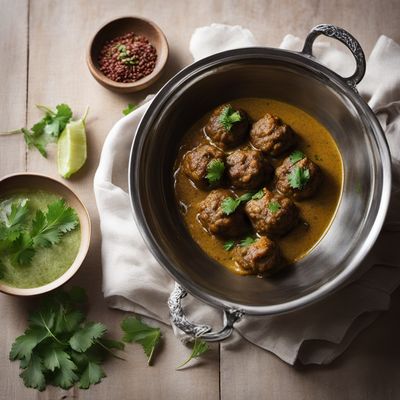
Ingredient
Yoghurt, cow milk, plain
The Creamy Classic: Plain Cow Milk Yoghurt
Plain cow milk yoghurt is a thick and creamy dairy product with a slightly tangy flavor. It has a smooth and velvety texture, making it enjoyable to eat on its own or as a component in various recipes. This yoghurt is made by fermenting cow's milk with live bacterial cultures, which gives it its distinct taste and texture. It is typically available in full-fat, low-fat, and non-fat varieties to suit different dietary preferences.
Origins and history
Yoghurt has a long history that dates back thousands of years, with its origins believed to be in Central Asia. It has been consumed by various cultures throughout history and holds cultural significance in many cuisines. Plain cow milk yoghurt is commonly used in Mediterranean, Middle Eastern, and Indian cuisines, where it is incorporated into dishes like tzatziki, raita, and lassi. It is also enjoyed as a refreshing snack or dessert on its own.
Nutritional information
Plain cow milk yoghurt is a good source of protein, calcium, and probiotics, which are beneficial bacteria that support gut health. It also contains essential vitamins and minerals, including vitamin B12, riboflavin, and phosphorus. The nutritional content may vary depending on the fat content of the yoghurt.
Allergens
Contains milk.
How to select
When selecting plain cow milk yoghurt, look for a yoghurt that is thick and creamy in consistency. Avoid yoghurts that have a watery or grainy texture, as this may indicate poor quality. Opt for yoghurts that are made with minimal additives or sweeteners, as these can affect the taste and nutritional value. If possible, choose yoghurts that are made from organic or grass-fed cow's milk for a higher quality product.
Storage recommendations
To prolong the freshness and quality of plain cow milk yoghurt, store it in the refrigerator at a temperature between 35-40°F (1-4°C). Keep it tightly sealed to prevent the absorption of odors from other foods. It is best consumed within a week of opening for optimal taste and texture.
How to produce
Plain cow milk yoghurt can be produced at home by heating cow's milk to a specific temperature, adding a small amount of yoghurt starter culture, and allowing it to ferment for several hours. The process requires a yoghurt maker or a warm environment to maintain the ideal temperature. It is a relatively simple process that can be done by amateur cooks with the right equipment and ingredients.
Preparation tips
Plain cow milk yoghurt can be enjoyed in various ways. It can be eaten on its own as a healthy snack or used as a base for dressings, dips, and sauces. It can also be incorporated into baked goods, such as cakes and muffins, to add moisture and richness. Additionally, plain cow milk yoghurt can be blended with fruits and honey to create refreshing smoothies or frozen yoghurt.
Substitutions
Greek yoghurt, soy yoghurt, or coconut yoghurt can be used as substitutes for plain cow milk yoghurt. These alternatives offer similar creamy textures and tangy flavors, making them suitable replacements in recipes that call for plain cow milk yoghurt.
Culinary uses
Plain cow milk yoghurt is widely used in various cuisines around the world. It is a key ingredient in Mediterranean dishes like tzatziki, a cucumber and yoghurt dip, and Greek yoghurt bowls topped with fruits and nuts. In Indian cuisine, it is used to make raita, a cooling yoghurt-based side dish, and lassi, a traditional yoghurt drink. Plain cow milk yoghurt is also commonly used as a topping for desserts or as a base for smoothies and parfaits.
Availability
Commonly available worldwide
More ingredients from this category
Recipes using Yoghurt, cow milk, plain » Browse all

Paneer Naan Recipe
Deliciously Stuffed Paneer Naan: A Flavorful Indian Delight

Chicken Tikka Masala
Spiced Chicken in Creamy Tomato Sauce

Moroccan-style Murgh Malai
Saffron-infused Moroccan Chicken in Creamy Sauce

Gyros - Fast Food Style
Greek-Inspired Fast Food: Savory Gyros Delight

Akçaabat Köftesi with Yogurt Sauce
Savory Turkish Meatballs in Creamy Yogurt Sauce

Kulcha - A Delicious Twist from India to Kosovo
Spiced Stuffed Flatbread: A Fusion of Indian and Kosovan Flavors

Chicken Tikka Masala
Dutch-inspired Chicken Tikka Masala: A Fusion of Indian and Dutch Flavors

Kashmiri Lamb Meatballs in Yogurt Gravy
Velvety Kashmiri Lamb Meatballs in Fragrant Yogurt Gravy

Afghan Paloo with Fragrant Rice and Tender Lamb
Saffron-infused Afghan Paloo: A Flavorful Delight of Fragrant Rice and Succulent Lamb

Moldovan-style Pastechi
Savory Moldovan Pastries: A Taste of the Caribbean

Muhajir-style Spiced Fish with Creamy Dill Sauce
Savor the Flavors of Muhajir Cuisine with Spiced Fish and Creamy Dill Sauce

Brazilian-style Chicken Tikka Masala
Saboroso Frango Tikka Masala
